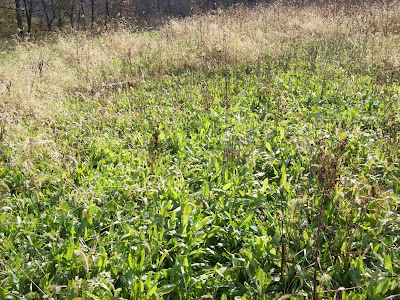
Hello, welcome to the future of deer hunting, QDMA. My name is Phil DeJarnatt, President of the Heart of Illinois chapter of Quality Deer Management Association. I am an outdoorsman and wildlife consultant, I grew up in the heart of Illinois right here in Washington, Illinois. I have lived in central, western, and southern Illinois as well as southeastern Kansas. I have seen deer herds all over and, we have the most potential, but we need to take care of what we have!
Illinois doesn’t have a problem with deer. Now, locally there are some problems, but I don’t believe the problem is as bad as people think. The main problem is just lack of habitat, we are building house where these deer have lived for years and wonder why there are deer everywhere in these urban areas, hello, we are taking away the their homes. Yes, changes need to be made in our regulations and the way we look at deer management. When manipulating wild populations, it takes time! So start now, don’t waste any more time.
All living things have the same basic needs; food, water, and cover. So after providing these then you can look at how to manage these deer on your land. The main things needed to have a healthy deer herd; good age structure and even sex ratio. So by shooting young bucks and not many does you are setting up for disaster. 3.5 is the hardest year to pass on a buck, here in Illinois we have some really nice 3.5 year old, but they are still not in their prime, and can actually gain quite a bit still in antler growth. Let him go, do you want to shoot a decant buck or a monster buck?
The biggest complaints I here that are commonly misunderstood; 1) “oh man he had a huge body and a small rack so I shot him.” 2) “if I don’t shoot him my neighbor will.” Or 3) “I only hunt on 80 acres that’s not enough to manage. “
To the hunter saying, “Oh man he had a huge body and a small rack so I shot him.” Congrats you probably just shot a nice 2 ½ or 3 ½ year old buck, the easiest deer in the woods to shoot. He is showing maybe 50% of his potential. The most important thing when harvesting bucks IS NOT antler size. That should have nothing to do with it! The goal is harvesting mature buck, bucks at 4 ½ or 5 ½, when he is showing more like 80-90+% of his potential. There are also many health reasons why mature bucks are needed in your herd, and why antlerless numbers must be kept in check. I will speak on this in another article. So when you see a nice young buck with mass amounts of potential, please let him walk! We are fortunate to live in Illinois where if you shoot based on antler score or size of 130” you are shooting immature bucks! That is where ageing bucks on the hoof become a vitally important skill, with a little training and patience you can age on the hoof. In every issue of “Quality Whitetails” there is the AGE THIS section, check it out, there will be a picture followed by 6 wildlife biologists explaining what to look for, and what age that deer is.
Now I will address the second and the third complaint together, “If I don’t shoot him my neighbor will.” Not really, you would be surprised. If you shoot it, you can guarantee it will never be a magnificent Illinois monster! That is where COOPERATIVES come in to play. What is a cooperative you ask? When hunters put together their land and work together as a team managing for a common goal, a healthy deer herd. Getting you and your neighbors together and talking about management goals, helping each other with food plots, and putting your 120 acres with a few neighbors 600 acres and you can easily mange and see great results! It is a great way to meet your neighbors and make a social event out of it,
We the Heart of Illinois QDMA will at some time offer classes on Ageing Bucks on the Hoof, and cooperatives, and have information available; it is our goal to help you out! Together let’s keep this great hunting heritage around for generations! But we must do something now! Some of the Outfitters are now noticing the troubles that are presenting themselves, caused by horribly out of whack sex ratios, and no age structure, let’s not let it all get that bad everywhere, we must start now! Thanks for reading and God bless!
Thanks, for question or comments call, or email, Phil DeJarnatt my info can be found at my website http://www.foodplotphil.blogspot.com/



























